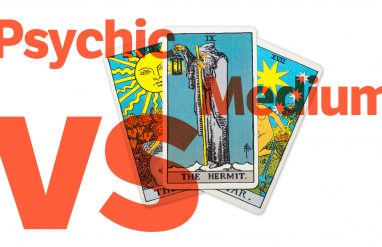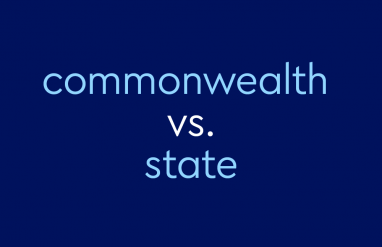We’re pretty sure we don’t have to point it out: advertising is everywhere. Your social media, internet, and email inbox are full of ads—and that’s because you are a consumer and therefore a target for marketing campaigns for everything from soft drinks to cars.
Sometimes it’s hard to decipher what’s an ad and what’s not. From the influx of emails from retailers to the influencers that rhapsodize about their latest favorite products on Instagram, marketing and advertising efforts by brands and companies are becoming increasingly more seamless and ubiquitous in our lives than ever before.
To those unfamiliar with industry jargon, it may seem like marketing and advertising are one and the same—and in a way, they are. After all, the basic premise behind both is pretty simple: promote and sell products. So if marketing and advertising are both working toward the same end goal, what’s the difference between the two?
What does marketing mean?
First coined in the 1560s, the term marketing originated as the simple act of conducting business in a literal market. Since then, the word—and luckily for us, the world around it—has evolved, and the process of marketing now encompasses the total activities involved in the transfer of goods, including advertising, shipping, storing, and the actual act of selling.
For example:
- While a graphic designer and a copywriter’s jobs may seem vastly different, they both work in their company’s marketing department.
- The company made the decision to increase its creative marketing budget despite showing an overall loss of revenue year over year.
- An effective marketing campaign ideally serves a company’s consumer base while simultaneously maximizing revenue.
Because all of these sub-processes fall under the scope of marketing, there are an infinite number of ways that businesses can creatively market themselves (Skittles created a musical once), but how they go about it depends largely on what type of audience they’re looking to engage with.
In business-to-consumer (B2C) marketing, businesses target, speak, and sell directly to consumers. This is the most common form of marketing that most people first think of when they hear the term, and it encompasses most retail businesses, brick-and-mortar stores, or online retailers that ship directly to customers.
On the other hand, companies that position themselves as business-to-business (B2B) aim to capture the attention of other companies through their marketing efforts. A business that sells wholesale merchandise to local retailers is a prime example of B2B in practice, along with agencies that provide services like interior design, bookkeeping, or even digital marketing to other companies.
The history of B2B marketing—or “industrial marketing,” as it was called before the 1990s—is hard to come by, mostly because for a long time, it didn’t actually exist. It wasn’t until the 1920s that B2B marketing really came into its own through niche trade catalogs, and marketing departments as we know them today didn’t emerge in corporations until the 1950s.
The 4 P’s of marketing
B2B and B2C companies will likely have drastically different marketing strategies based on how they want to engage their audiences, but there are some key similarities that are covered in any basic marketing campaign, which can be boiled down to “The 4 P’s of Marketing”:
- Product: the actual products, goods, and/or services that are made available to the consumer.
- Price: what a company charges for their product.
- Place: anywhere the product is distributed, physically or virtually.
- Promotion: any and all vehicles of communication that a company uses to relay messages about the product—which is also where advertising comes into play.
What does advertising mean?
In contrast to marketing, advertising is the actual process of promoting a specific product, service, brand, or idea. By definition, advertising is “the action of calling something to the attention of the public, especially by paid announcements.”
Advertising is a smaller, more focused aspect of marketing that involves the development of specific messaging and creative assets (photography, video, illustrations, collages, and other graphic design elements) related to whatever it is a company is looking to promote. Simply put: advertising spreads the word.
For example:
- Most businesses aim to drive sales and get new customers through strategic advertising.
- The company’s advertising campaign proved to be unsuccessful even though it tested well in focus groups.
- An advertising agency—often referred to as a creative agency—is a business dedicated to creating, planning, and handling paid advertisements for its clients.
Ideally, advertising should drive people to purchase, but that might not always be the goal behind an ad. In fact, researchers studying the relationship between the perceived success of Super Bowl ads and actual sales actually found that the majority of ads on Super Bowl Sunday—arguably the most prestigious ad spot of the year—don’t boost purchases or make viewers more likely to purchase a product featured in an ad.
This might seem counterproductive; what’s the point of shelling out millions of dollars for an ad spot if you’re not going to see a worthwhile return on that investment? Two words: brand awareness. Even if the ads themselves don’t drive customers to purchase something in that moment, some advertisers argue that the increased social buzz surrounding the ad alone keeps the brand top of mind for longer, and may potentially influence purchasing decisions in the future.
What are the different types of advertising?
Traditional advertising: focuses on what you might consider to be “typical” advertising: television, radio, newspapers, magazines, direct mail, and billboards.
Digital advertising: encompasses all types of online advertising, including paid search (PPC), social media, display ads on websites, email campaigns, and more.
Marketing and advertising: looking ahead
Though marketing and advertising are still constantly evolving, one is not necessarily more valuable than the other. It’s likely that the strategies that companies use to advertise and market their products will continue to change in an ever-evolving, digitally focused world, but if one thing’s for certain: advertising is a crucial piece of the marketing puzzle. If businesses hope to see success in the years to come, they’ll have to develop holistic marketing strategies that reflect that.
If there’s one target audience all marketers love, it would have to be the shopaholic. Do you know the medical term for a shopaholic?














